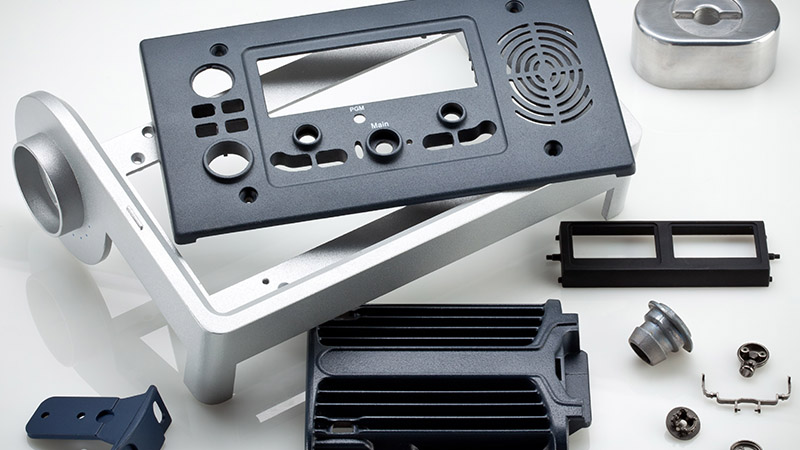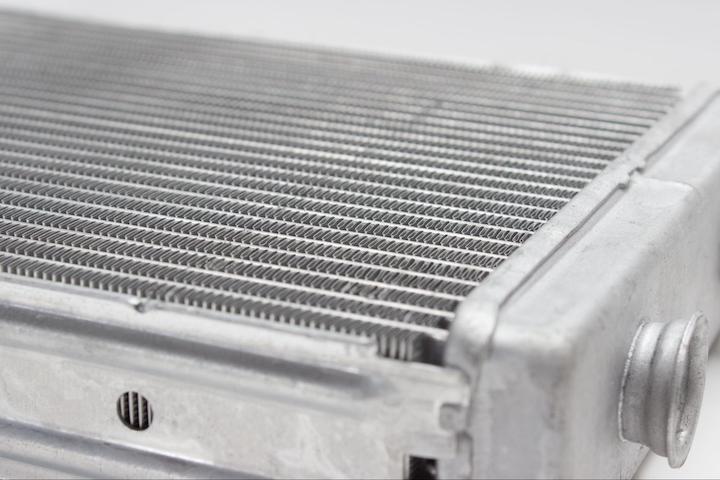Checking Out the Essential Applications and Uses of Light Weight Aluminum Shop in Modern Production
Aluminum foundries play a necessary role in modern manufacturing, serving diverse markets with their distinct residential or commercial properties. From automobile components that enhance gas effectiveness to aerospace frameworks that focus on weight, light weight aluminum's versatility appears. Its applications include building and construction and customer electronic devices, highlighting its durability and power efficiency. However, the innovations in light weight aluminum spreading strategies and future patterns call for a closer exam, as they might redefine its influence on production.
The Function of Aluminum Foundries in Automotive Production
As the auto sector increasingly prioritizes light-weight products to improve fuel efficiency and efficiency, aluminum foundries have actually ended up being vital contributors to making procedures. These foundries focus on creating components that fulfill the strict demands of modern-day cars, such as engine blocks, transmission real estates, and architectural components. Aluminum's favorable homes-- such as high strength-to-weight ratio, deterioration resistance, and outstanding thermal conductivity-- make it a perfect choice for automotive applications.
Additionally, aluminum shops utilize innovative casting methods, including die spreading and sand casting, to produce resilient and detailed parts. This capacity allows producers to maximize designs for efficiency while decreasing weight. Making use of light weight aluminum additionally supports sustainability goals, as it is very recyclable and reduces energy intake in vehicles. By assisting in the assimilation of aluminum into automobile style, shops play a critical function fit the future of the vehicle sector, advertising efficiency and innovation across the board.
Aerospace Applications: Lightweight Solutions for Trip
Aluminum foundries play a significant function in the aerospace industry, where the demand for light-weight products is critical for enhancing fuel efficiency and efficiency in airplane. The one-of-a-kind residential properties of light weight aluminum, including its high strength-to-weight proportion and deterioration resistance, make it an ideal selection for numerous aerospace parts. These parts consist of architectural components, engine cases, and touchdown equipment, which add to total airplane efficiency.
The use of aluminum alloys, particularly those developed through advanced casting strategies, permits for the manufacturing of complex styles and complex forms while minimizing weight. Additionally, light weight aluminum's recyclability straightens with the aerospace market's sustainability goals, reducing ecological effect. With constant advancements in light weight aluminum factory innovations, producers can optimize manufacturing processes, leading to increased performance and minimized expenses. As the aerospace field significantly prioritizes developments that boost efficiency, aluminum shops will continue to be indispensable to establishing light-weight remedies for contemporary flight.
Structure and Building: Enhancing Structural Stability
In the building and building industry, a significant emphasis is placed on improving structural stability via the usage of aluminum. Recognized for its high strength-to-weight ratio, light weight aluminum offers resilience without endangering on weight, which is vital in modern-day architectural layouts. Its resistance to rust further ensures longevity, making it a suitable material for different architectural components, consisting of beams, frames, and cladding.
Aluminum likewise assists in innovative design opportunities, permitting architects and designers to create visually pleasing frameworks while keeping safety requirements. The product's versatility enables its application in both industrial and domestic jobs, from high-rises to bridges. In addition, developments in aluminum factory methods have actually boosted the accuracy of aluminum elements, ensuring they satisfy rigid building ordinance. On the whole, the assimilation of light weight aluminum in construction not only enhances structural integrity but also adds to lasting structure practices, given its recyclability and energy-efficient production methods.
Customer Electronic Devices: The Surge of Light Weight Aluminum in Modern technology
In the domain name of customer electronic devices, aluminum has acquired prominence due to its lightweight layout advantages and remarkable thermal conductivity. This change not only enhances item transportability however likewise improves gadget performance by effectively dissipating heat. As modern technology remains to progress, the role of light weight aluminum in developing reliable and streamlined tools is progressively considerable.
Lightweight Layout Benefits
As consumer electronics evolve, the demand for light-weight yet sturdy products has surged, making aluminum a progressively popular selection among manufacturers. Its reduced thickness allows for the production of smooth devices that are very easy to utilize and lug, significantly enhancing mobility. The strength-to-weight ratio of light weight aluminum guarantees that items can stand up to day-to-day deterioration without compromising efficiency. Additionally, the malleability of light weight aluminum allows suppliers to create complex shapes and types, better adding to cutting-edge visual appeals and capability. This lightweight attribute likewise plays an important duty in energy effectiveness, as lighter tools require less power to run. Therefore, aluminum not just fulfills the developing aesthetic demands yet additionally aligns with the contemporary concentrate on sustainability in customer electronic devices.
Thermal Conductivity Conveniences
Thermal conductivity is a crucial aspect in the performance of consumer electronics, and aluminum master this domain name. Its high thermal conductivity allows for effective warm dissipation, which is essential for maintaining ideal operating temperature levels in tools such as smartphones, laptops, and gaming consoles. By assisting in fast warmth move away from sensitive elements, light weight aluminum assists protect against getting too hot, therefore enhancing performance and extending gadget durability. In addition, the light-weight nature of light weight aluminum enhances its thermal residential or commercial properties, making it an optimal option for portable modern technology. As manufacturers increasingly focus on efficiency and energy efficiency, aluminum's duty in thermal monitoring comes to be also a lot more considerable, resulting in its growing fostering in contemporary electronic designs. This trend emphasizes light weight aluminum's significance in consumer electronic devices advancement.
Marine Industry: Deterioration Resistance in Harsh Settings
Deterioration resistance is an important consider the marine sector, where devices and frameworks are regularly exposed to rough deep sea atmospheres. Aluminum, specifically in its alloy forms, supplies considerable advantages in this respect. Its natural oxide layer gives a safety barrier that stops corrosion, making it excellent for vessels, docks, and various other marine applications.
Marine-grade light weight aluminum alloys, such as 5083 and 6061, are particularly designed to hold up against the destructive results of saltwater and weather. These alloys not only stand up to rust however additionally maintain architectural integrity and stamina over time. Applications range from hulls and superstructures of ships to parts in offshore systems.
The lightweight nature of light weight aluminum more enhances its viability, enabling enhanced gas efficiency and convenience of handling - aluminum casting company. As the aquatic sector remains to concentrate on longevity and performance, aluminum continues to be a vital product selection for resisting rust popular aquatic setups
Developments in Light Weight Aluminum Spreading Techniques
While conventional aluminum spreading approaches have actually offered the industry well, recent technologies are changing the landscape of aluminum manufacturing. Methods such as 3D printing of mold and mildews and cores are getting grip, enabling rapid prototyping and reduced preparations. This improvement allows makers to develop intricate geometries that were formerly hard to attain with standard spreading approaches. In addition, advancements in die-casting technology, consisting of the usage of high-pressure die-casting (HPDC), have actually boosted the accuracy and surface area coating of cast aluminum components, resulting in enhanced performance in various applications.
The fostering of investment spreading has permitted for better style liberty and decreased material waste. Developments in alloy compositions are additionally considerable, as they enhance mechanical buildings and rust resistance. Overall, these developments not just improve manufacturing processes but additionally contribute to more lasting methods within the aluminum shop industry, making it versatile to the progressing demands of modern-day manufacturing
Future Fads in Light Weight Aluminum Foundry Manufacturing
The future of aluminum factory manufacturing is Web Site poised for substantial change via automation, enhancing effectiveness and accuracy in manufacturing processes. Lasting techniques are progressively ending up being a top priority, as shops seek to decrease their environmental effect while meeting expanding regulatory demands. Furthermore, advancements in alloy development will certainly enable the development of more powerful, lighter products tailored for diverse applications, driving technology in the industry.
Automation in Foundry Processes

Lasting Production Practices
An expanding emphasis on sustainable production practices is reshaping the future of aluminum foundry manufacturing. Market leaders are increasingly taking on energy-efficient innovations and recycling campaigns to reduce waste and reduce carbon impacts. Using recycled aluminum substantially reduces energy usage contrasted to main aluminum production, making it a preferred selection for eco mindful suppliers. In addition, cutting-edge casting strategies are being developed to boost material effectiveness and reduce emissions. Business are also purchasing renewable resource resources, such as solar and wind, to power their procedures sustainably. Casting Foundry. By integrating these methods, the light weight aluminum foundry industry not just fulfills regulatory demands yet also reacts to customer demand for greener products, inevitably leading the way for a much more lasting production landscape
Advanced Alloy Development
Improvements in light weight aluminum alloy development are set to play a considerable duty in the future of factory manufacturing, specifically as sustainability and efficiency demands rise. The industry is progressively concentrating on developing high-strength, light-weight alloys that can hold up against extreme conditions while reducing ecological effect. Scientists are discovering cutting-edge make-ups, such as aluminum-lithium and aluminum-scandium alloys, which promise enhanced mechanical residential properties and reduced weight. Additionally, the integration of advanced manufacturing techniques, including additive production and accuracy spreading, permits even more complicated geometries and minimized product waste. As governing stress and customer preferences shift towards greener alternatives, the development of recyclable and energy-efficient alloys will certainly be essential. The future landscape of light weight aluminum shop production rests on these innovations in alloy modern technology.

Regularly Asked Inquiries
What Are the Ecological Effects of Aluminum Shop Procedures?
Aluminum foundry procedures can cause considerable ecological effects, including greenhouse gas exhausts, power consumption, and waste generation. Additionally, inappropriate administration of pollutants might cause soil and water contamination, influencing neighborhood ecological communities and neighborhoods.
How Does Light Weight Aluminum Recycling Affect Factory Processes?
Aluminum reusing enhances shop processes by giving an economical raw product, decreasing power usage and emissions. This lasting practice boosts efficiency, decreases waste, and supports the round economy, profiting both producers and the environment.
What Security Steps Are Carried Out in Aluminum Foundries?
Light weight aluminum shops apply different safety and security steps, including personal protective tools, proper ventilation systems, regular security training, fire avoidance protocols, and devices upkeep treatments to lessen link hazards and guarantee a risk-free functioning environment for all workers.
Just How Do Foundries Ensure High Quality Control in Light Weight Aluminum Casting?
Foundries guarantee high quality control in light weight aluminum spreading through rigorous material examinations, precise temperature tracking, standard treatments, and normal testing of actors items. These actions help maintain consistency, decrease flaws, and fulfill sector specifications efficiently.
What Are the Expense Variables in Light Weight Aluminum Foundry Production?
Cost consider aluminum factory production include basic material costs, energy usage, labor costs, equipment maintenance, and overhead expenses. Additionally, manufacturing quantity and intricacy of layouts substantially influence total manufacturing costs and profitability.
As the automotive industry significantly focuses on light-weight materials to enhance fuel performance and efficiency, light weight aluminum shops have actually ended up being crucial factors to producing processes. Aluminum shops play a considerable function in the aerospace sector, where the need for lightweight materials is extremely important for boosting fuel efficiency and efficiency in airplane. Additionally, advancements in light weight aluminum factory techniques have actually boosted the accuracy of aluminum parts, guaranteeing they meet stringent structure codes. While conventional light weight aluminum casting methods have actually served the sector well, current advancements are transforming the landscape of light weight aluminum manufacturing. The usage of recycled aluminum considerably lowers power usage contrasted to main light weight aluminum manufacturing, making it a favored choice for ecologically conscious makers.